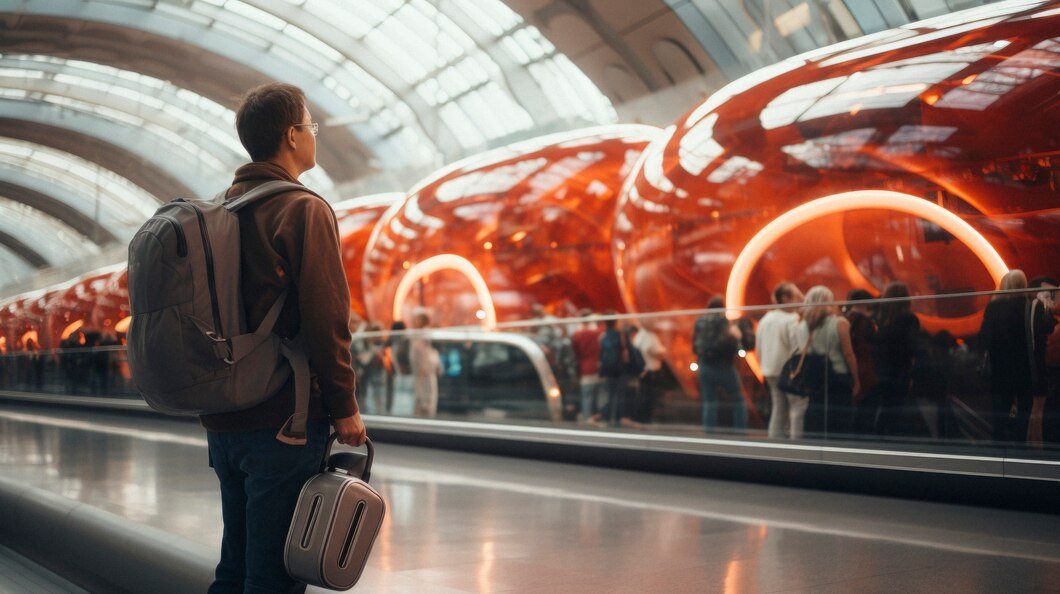Travel
The Future of Air Travel: How Technology Is Streamlining Passenger Experience

Streamlining Air Travel
Air travel has seen tremendous developments, but issues like long queueing times, complex security check procedures, and delayed flights still exist. Recent technologies can bridge this gap as operations become more accessible and convenient.
Learn how innovations from automated systems to smart infrastructure change the air travel journey.
Key Challenges in Air Travel
Air travel flow restrictions could annoy customers by forcing them to spend many hours at the check-in counter, security screening, and waiting for delayed baggage. Fortunately, information technologies can resolve the situation and make the passengers’ journey as convenient as possible.
Contactless and Self-Service
One of the most meaningful shifts in air travel is using self-service technologies. Check-in kiosks that generate boarding passes are one thing; online check-ins and self-service bag drop have minimized waiting time.
Adopting online booking improves passenger control throughout flight booking and boarding. The rate of adoption of contactless technologies, accelerated by the COVID-19 pandemic, uses digital boarding passes, payments, and mobile health passports to ensure efficiency, safety, and reduced contact.
Biometric Security With AI Integration
Security has often been considered a significant delaying factor, but biometric technology changes that. Facial recognition, fingerprint scanning, and iris recognition keep speeding up identification procedures and making them faster and more reliable.
In the U.S., examples include CLEAR and Transportation Security Administration (TSA) PreCheck programs, which allow passengers to make it through the airport quickly because biometrics speed up security checks.
AI is also a key player in improving efficiency. Examples include predictive analytics of delays and smart customer support chatbots that help passengers with more effective scheduling, diversions, and real-time help. Airports in Japan employ AI-powered robots to give directions to and answer frequently asked questions from passengers.
Smart Airports, Airport Management and the Internet of Things (IoT)
Smart airports are the growing reality behind many IoT devices connecting numerous airport systems to improve efficiency and save. Sensors monitor everything from baggage handling to fleet maintenance solutions for aircraft, ensuring smooth operations supported by real-time data.
In the same way, smart lighting, temperature and maintenance make the trip much easier for a traveler.
The integration of IoT is also transforming airport management, enabling real-time analysis of passenger flow, congestion, and resource allocation. Airports like Incheon and Changi employ these technologies to improve operational performance and passenger satisfaction, creating a coordinated airport environment.
Sustainability and Eco-Friendly Innovations
Air travel is evolving towards a more sustainable future, and technology drives this transformation.
The airline industry embraces more fuel-efficient aircraft, electric ground vehicles, and optimized routes that reduce carbon footprint. Data analytics can help manage fuel better, and airports buy power from renewable sources for consumption. Such initiatives assist the environment and are useful to clients who are conscious of environmental conservation.
Better Flying Experience
Technology is also said to have improved the flying experience. Some of the features pertaining to the agreed-upon concept include fast Wi-Fi, entertainment customized to the passenger’s taste, and services that reflect the passenger’s preference.
Even the regular airlines are proposing virtual and augmented reality (VR/AR) as a new kind of on-flight entertainment. Data analytics can remember many things about passengers—what they want to take with them in terms of food and where they would like to sit—making travel not only fun but also unique.
Innovations Shaping Air Travel
Innovation in air travel is expected to be used more widely to simplify the passenger experience further. Autonomous vehicles within the airport, such as self-driving shuttles and luggage carriers, are already being tested to improve efficiency.
Drones are being considered for security, maintenance around the airport, and cargo transport. Virtual and augmented reality would help guide passengers to the gates, shops, and services more quickly.
Redefining the Passenger Experience Through Technology
From self-service kiosks and AI-powered security to many other things, technology is bringing air travel to a new horizon of speed, convenience, and safety.
However, this gap between operating efficiency and total passenger satisfaction regarding journey status will close with increasing innovations.
Embracing technology to improve a flight from takeoff to landing, to make a trip as uncomplicated and worry-free as possible, appears to be the direction being planned for the future of commercial flying.
-

 Business9 months ago
Business9 months agoSepatuindonesia.com | Best Online Store in Indonesia
-

 Technology5 months ago
Technology5 months agoTop High Paying Affiliate Programs
-

 Tech3 hours ago
Tech3 hours agoUnderstanding thejavasea.me Leaks Aio-TLP: A Comprehensive Guide
-

 Tech9 months ago
Tech9 months agoAutomating Your Window Treatments: The Advantages of Auto Blinds
-

 Tech9 months ago
Tech9 months agoUnleash Your Potential: How Mecha Headsets Improve Productivity and Focus
-

 Instagram2 years ago
Instagram2 years agoFree Instagram Follower Without Login
-

 Instagram2 years ago
Instagram2 years agoFree Instagram Auto Follower Without Login
-

 Business12 months ago
Business12 months agoFollow These 5 Tips To Avail Personal Loans At Lower Interest Rates


















